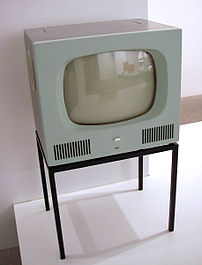 The conference board announced today, September 4th, that nearly one-fifth of American households with Internet access watch TV online, double the viewership from 2006.
The conference board announced today, September 4th, that nearly one-fifth of American households with Internet access watch TV online, double the viewership from 2006.In its study of 10,000 households, TNS and the conference board found that almost 9 out of ten online TV viewers watch online broadcasts at home. 15% say they watch Internet broadcasts at work.
The top sources of online broadcasts were official TV channel homepages (65% of viewers) followed by YouTube (41%). Other sites include iTunes, Hulu (an NBC & FOX Join Venture), P2P sites, social networking sites and Limewire. The most notable aspect reported in the study is the fact that few consumers are willing to enroll in pay per download & subscription services. With that in mind, don't be surprised to find your favorite content swimming in a sea of sponsored ads, product placements, pre-rolls and other methods of monetization as broadcasters and content publishers try to figure out the most commercially viable distribution model for long tail and "hit" content.

"The shift from appointment TV to content on demand is well underway,” said Michael Saxon, SVP, Brand and Communications, TNS. “Fundamentally, consumers expect content to be available when they want it, and on the screen of their choice - TV, PC, or mobile. For consumers, PCs enhance content on demand from simply time-shifting to place-shifting."

1 comment:
Product placement ads are frequently seen as a negative. As they have been recently implemented, that assessment is valid.
However, I recently re-watched all of Buffy the Vampire Slayer, and realized that the program was loaded with product placement advertising. It was so smoothly integrated into the program as cultural references in natural conversation that the ads actually added to the program instead of detracting from it.
If advertisers want to see how you do product placement correctly, BtVS should be their bible.
Post a Comment